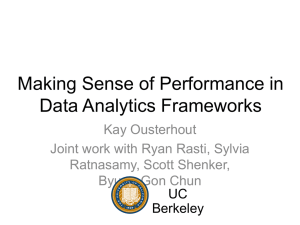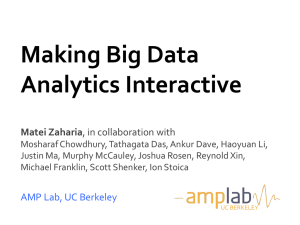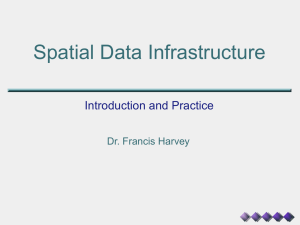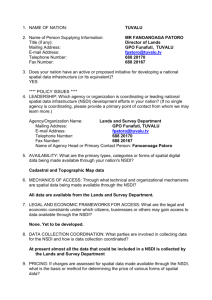Making Sense of Spark Performance Kay Ousterhout UC Berkeley
advertisement
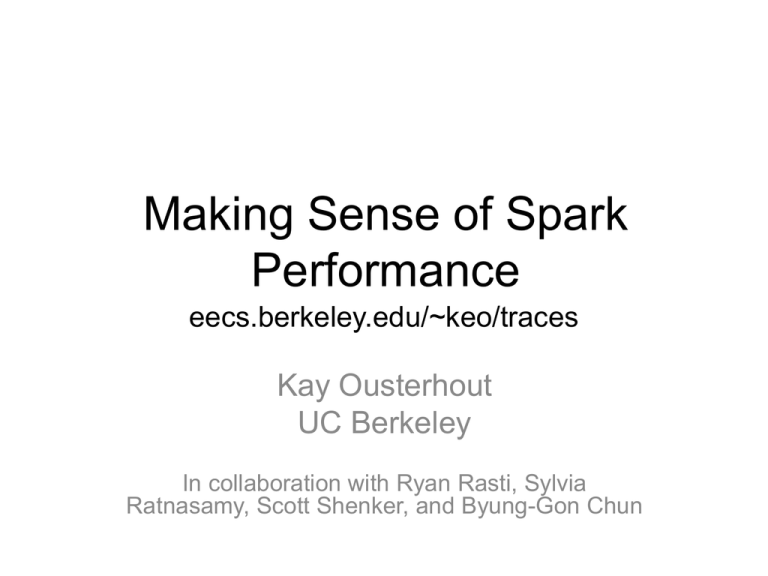
Making Sense of Spark
Performance
eecs.berkeley.edu/~keo/traces
Kay Ousterhout
UC Berkeley
In collaboration with Ryan Rasti, Sylvia
Ratnasamy, Scott Shenker, and Byung-Gon Chun
About Me
PhD student in Computer Science at UC
Berkeley
Thesis work centers around performance of
large-scale distributed systems
Spark PMC member
About This Talk
Overview of how Spark works
How we measured performance bottlenecks
In-depth performance analysis for a few
workloads
Demo of performance analysis tool
I am Sam
I am Sam
6
Sam I am
Do you like
6
Green eggs
and ham?
4
Spark driver:
6+6+4+5 = 21
…
Cluster of machines
Count the # of words in the document
Thank you,
Sam I am
5
Spark (or Hadoop/Dryad/etc.) task
Count the # of occurrences of each word
I am Sam
I am Sam
{I: 2,
am: 2,
…}
{I: 4,
you: 2,
…}
Sam I am
Do you like
{Sam: 1,
I: 1,
…}
{am: 4,
Green: 1,
…}
MAP
Green eggs
and ham?
{Green: 1,
eggs: 1,
…}
…
Thank you,
Sam I am
{Thank: 1,
you: 1,… }
REDUCE
{Sam: 4,
…}
{Thank:
1,
eggs: 1,
…}
Performance considerations
I am Sam
I am Sam
Sam I am
Do you like
Green eggs
and ham?
…
Thank you,
Sam I am
(1) Caching input data
(2) Scheduling:
assigning tasks to
machines
(1) Straggler tasks
(2) Network performance
(e.g., during shuffle)
Caching
PACMan [NSDI ’12], Spark [NSDI ’12], Tachyon [SoCC ’14]
Scheduling
Sparrow [SOSP ‘13], Apollo [OSDI ’14], Mesos [NSDI
‘11], DRF [NSDI ‘11], Tetris [SIGCOMM ’14], Omega [Eurosys ’13], YARN
[SoCC ’13], Quincy [SOSP ‘09], KMN [OSDI ’14]
Stragglers Scarlett [EuroSys ‘11], SkewTune [SIGMOD ‘12], LATE
[OSDI ‘08], Mantri [OSDI ‘10], Dolly [NSDI ‘13], GRASS [NSDI ‘14],
Wrangler [SoCC ’14]
Network
VL2 [SIGCOMM ‘09], Hedera [NSDI ’10], Sinbad
[SIGCOMM ’13], Orchestra [SIGCOMM ’11], Baraat [SIGCOMM ‘14], Varys
[SIGCOMM ’14], PeriSCOPE [OSDI ‘12], SUDO [NSDI ’12], Camdoop
[NSDI ’12], Oktopus [SIGCOMM ‘11]), EyeQ [NSDI ‘12], FairCloud
[SIGCOMM ’12]
Generalized programming model
Dryad [Eurosys ‘07], Spark [NSDI ’12]
Caching
PACMan [NSDI ’12], Spark [NSDI ’12], Tachyon [SoCC ’14]
Scheduling
Sparrow [SOSP ‘13], Apollo [OSDI ’14], Mesos [NSDI
‘11], DRF [NSDI ‘11], Tetris [SIGCOMM ’14], Omega [Eurosys ’13], YARN
[SoCC ’13], Quincy [SOSP ‘09], KMN [OSDI ’14]
Stragglersand
Scarlettdisk
[EuroSys I/O
‘11], SkewTune
[SIGMOD ‘12], LATE
Network
are bottlenecks
[OSDI ‘08], Mantri [OSDI ‘10], Dolly [NSDI ‘13], GRASS [NSDI ‘14],
Wrangler [SoCC ’14]
Stragglers
are‘09],
a Hedera
major
Network
VL2 [SIGCOMM
[NSDIissue
’10], Sinbadwith
unknown causes
[SIGCOMM ’13], Orchestra [SIGCOMM ’11], Baraat [SIGCOMM ‘14], Varys
[SIGCOMM ’14], PeriSCOPE [OSDI ‘12], SUDO [NSDI ’12], Camdoop
[NSDI ’12], Oktopus [SIGCOMM ‘11]), EyeQ [NSDI ‘12], FairCloud
[SIGCOMM ’12]
Generalized programming model
Dryad [Eurosys ‘07], Spark [NSDI ’12]
This Work
(1) Methodology for quantifying
performance bottlenecks
(2) Bottleneck measurement for
3 SQL workloads (TPC-DS and 2
others)
Network optimizations
can reduce job completion time by at
most 2%
CPU (not I/O) often the bottleneck
Most straggler causes can be
identified and fixed
Example Spark task:
network read
compute
disk write
time
: time to handle one record
Fine-grained instrumentation needed to
understand performance
How much faster would a job run if
the network were infinitely fast?
What’s an upper bound on the
improvement from network
optimizations?
How much faster could a task run if
the network were infinitely fast?
network read
compute
disk write
Original task runtime
: blocked on network
: blocked on disk
compute
Task runtime with infinitely fast network
How much faster would a job run if
the network were infinitely fast?
2 slots
time
Task 0
Task 2
Task 1
: time blocked
on network
2 slots
to: Original job completion time
Task 0
Task 1 Task 2
tn: Job completion time with infinitely fast network
SQL Workloads
TPC-DS (20 machines, 850GB;
60 machines, 2.5TB)
www.tpc.org/tpcds
Big Data Benchmark (5 machines, 60GB)
amplab.cs.berkeley.edu/benchmark
Databricks (9 machines, tens of GB)
databricks.com
2 versions of each: in-memory, on-disk
How much faster could jobs get
from optimizing network
performance?
Percentiles
95
75
50
25
5
Median improvement at most 2%
How can we sanity check these
numbers?
How much data is transferred per
CPU second?
Microsoft ’09-’10: 1.9–6.35 Mb / task second
Google ’04-‘07: 1.34–1.61 Mb / machine second
How can this be true?
Shuffle Data < Input Data
What kind of hardware should I
buy?
10Gbps networking hardware likely not
necessary!
How much faster would jobs
complete if the disk were
infinitely fast?
How much faster could jobs get
from optimizing disk performance?
Median improvement at most 19%
Disk Configuration
Our instances: 2 disks, 8 cores
Cloudera:
– At least 1 disk for every 3 cores
– As many as 2 disks for each core
Our instances are under provisioned
results are upper bound
How much data is transferred per
CPU second?
Google: 0.8-1.5 MB / machine second
Microsoft: 7-11 MB / task second
What does this mean about Spark
versus Hadoop?
This work:
19%
serialized +
compressed
on-disk
data
Faster
serialized +
compressed
in-memory
data
This work says nothing about
Spark vs. Hadoop!
up to 10x This work:
spark.apache.org
19%
(on-disk data)
Faster
serialized +
compressed
on-disk
data
serialized +
compressed
in-memory
data
6x or more
amplab.cs.berkeley.e
du/benchmark/
deserialized
in-memory
data
What causes stragglers?
Takeaway: causes depend on the workload, but
disk and garbage collection common
Fixing straggler causes can speed up other
tasks too
Live demo
eecs.berkeley.edu/~keo/traces
I want your workloads!
spark.eventLog.enabled true
keo@cs.berkeley.edu
Network optimizations
can reduce job completion time by at most 2%
CPU (not I/O) often the bottleneck
19% reduction in completion time from optimizing disk
Many straggler causes can be identified and
fixed
Project webpage (with links to paper and tool):
eecs.berkeley.edu/~keo/traces
Contact: keo@cs.berkeley.edu, @kayousterhout
Backup Slides
How do results change with scale?
How does the utilization compare?
